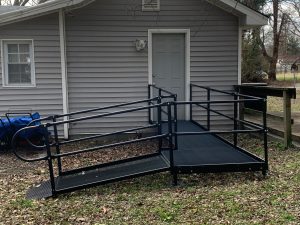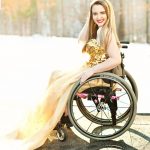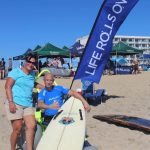United Spinal Association of Virginia was thrilled to have the opportunity to have representatives descend on Washington D.C. June 26th for the 5th annual Roll on Capitol Hill, sponsored by the national United Spinal organization. The 4 day event was attended for the second time by USAofVa Executive Director Sharon Drennan, first time attendee Dep. Dir. Richard Bagby, and repeat attendee Bill Furtig. They joined over 150 advocates from 38 states to bring awareness to pertinent legislation to the disabled community (which is detailed here)
The Virginia contingency was welcomed to the offices of all senators and congressmen representing the Commonwealth of Virginia, wherein many subjects were lobbied for.
The following is a detailed recap of the event from the national organization:
Over 150 wheelchair users, clinicians, partners and disability advocates from 33 states, plus Puerto Rico and the District of Columbia, gathered in Washington, D.C. on June 26-29 for our 5th Annual Roll on Capitol Hill to discuss improving disability policies with key congressional leaders.
Roll on Capitol Hill is United Spinal’s annual signature policy event that highlights advocacy priorities for its membership and the broader disability community to ensure wheelchair users and all people with disabilities are included in policy debates impacting their own health, independence, and quality of life.
“I’m delighted to welcome new and returning advocates, and look forward to what the future will bring for United Spinal and for people with SCI/D, veterans and the disability community at large. We look forward to continuing to work with all of you to build upon our many years of service to improve the civil rights and independence of our community,” said David Cooper, United Spinal’s Chairman of the Board who is a wheelchair user and military veteran.
“This is our fifth year hosting Roll on Capitol Hill and every year it gets better thanks to support from our sponsors. We appreciate their commitment to our mission and the work of our advocates to improve the rights of people with disabilities,” said James Weisman, United Spinal Association’s president and CEO.
During Roll on Capitol Hill, attendees took part in over 200 congressional office visits, meeting face-to-face with their representatives and other key legislators to personally discuss their unique challenges living with a disability and the need for:
access to customized rehab technology, prescription drugs, and medical supplies
home and community-based services and supports so that individuals can live and participate in their communities;
accurate incidence and prevalence data for individuals living with spinal cord injury and other conditions;
minimum standards of safety and quality for adaptive equipment at the VA;
funding of home modifications and adaptations for all categories of disabled veterans;
funding, grants and tax credits for veteran homebuyers.
On June 27, Roll on Capitol Hill attendees participated in a full day of policy briefings from advocates, agency officials and former Capitol Hill staffers.
The day began with Keynote Speaker Maria Town, Associate Director for the Office of Public Engagement, Executive Office of the President.
“The work I do would not be possible without the leadership of United Spinal and support from all the advocates at Roll on Capitol Hill. Thank you for all your advocacy efforts this week and the continued advocacy you will pursue once you leave DC. Hearing from all of you helps to ensure the White House is doing more to benefit the disability community,” Town said.
On the evening of June 28, United Spinal hosted a Congressional Awards Reception to recognize members of Congress for their outstanding service to people with disabilities and veterans, including:
The Honorable Johnny Isakson (R-GA) and The Honorable Mark Kirk (R-IL) were honored with the Junius A. Kellogg Outstanding Congressional Leadership Award for their vocal support of disability and veterans issues.
The Honorable Mazie Hirono (D-HI) was honored with the VetsFirst Congressional Bronze Star Award for her efforts to increase opportunities for veterans living with disabilities and to help them reintegrate into their communities.
The Honorable Charles Schumer (D-NY) was honored with the James J. Peters Disability Rights Champion Award for his extensive leadership for the disability community
United Spinal also honored consumer advocate Stephanie Woodward, Esq. who received the 2016 Finn Buller’s Advocate of the Year Award for her dedicated work to ensure the full integration, independence, and civil rights of people with disabilities.
“It’s truly an honor to receive the Finn Bullers Advocate of the Year Award, not only because Finn was an incredible advocate, but because his life embodies the very reason the Disability Integration Act was written – to keep disabled people out of institutions and in the community. It’s heartbreaking to know that such a great advocate was forced into an institution and died there when he should have been living in freedom. I’m proud to receive this award named for Finn and I will continue to fight for the Disability Integration Act so that all people with disabilities can live in freedom,” Woodward said.
For more information about the public policies that United Spinal addresses at Roll on Capitol Hill and throughout the year.
United Spinal gratefully acknowledges our Roll on Capitol Hill sponsors for their support of our members and advocates in making a positive difference in the lives of thousands of individuals living with disabilities.


















